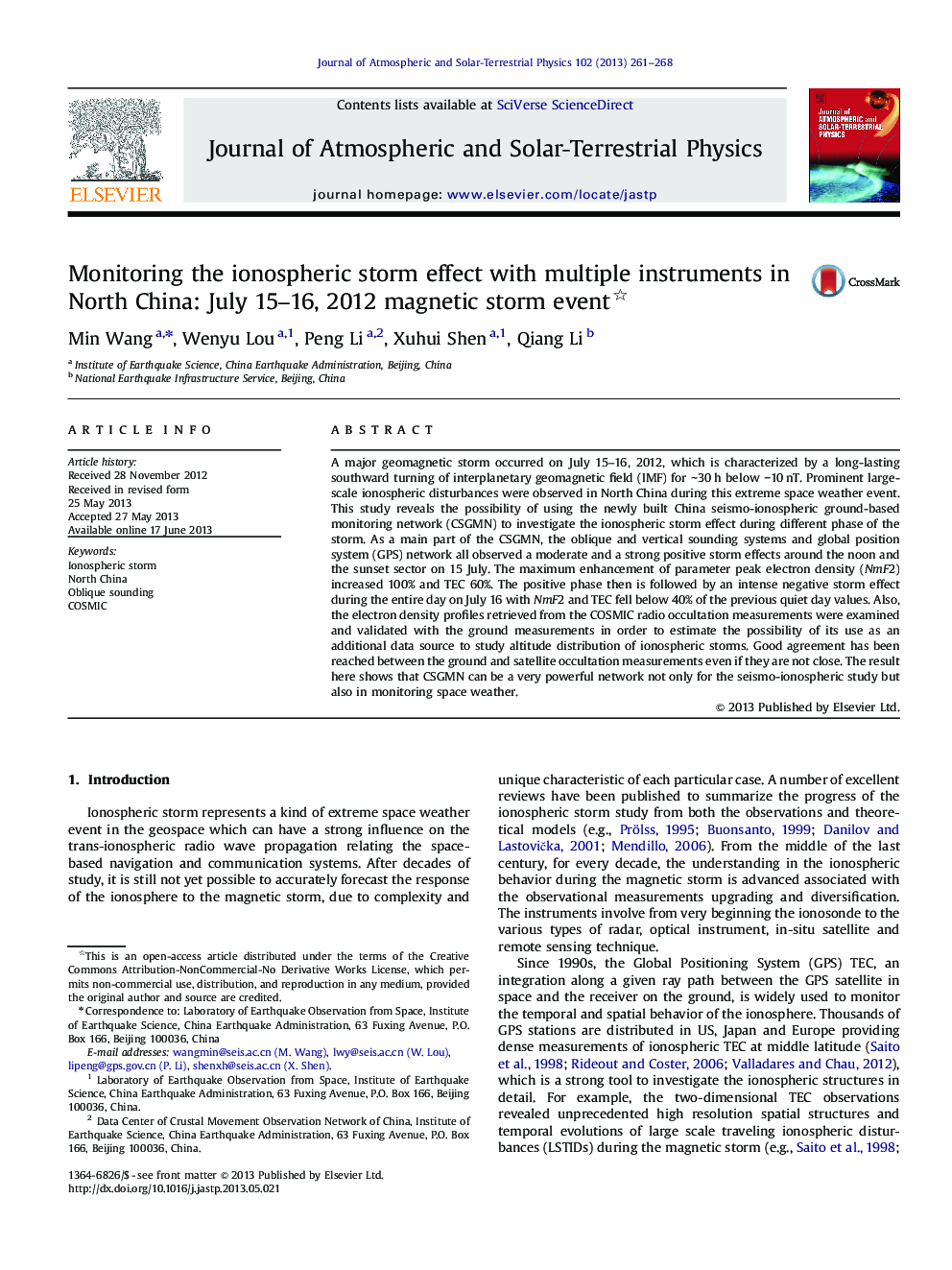| Article ID | Journal | Published Year | Pages | File Type |
|---|---|---|---|---|
| 8140654 | Journal of Atmospheric and Solar-Terrestrial Physics | 2013 | 8 Pages |
Abstract
A major geomagnetic storm occurred on July 15-16, 2012, which is characterized by a long-lasting southward turning of interplanetary geomagnetic field (IMF) for â¼30Â h below â10Â nT. Prominent large-scale ionospheric disturbances were observed in North China during this extreme space weather event. This study reveals the possibility of using the newly built China seismo-ionospheric ground-based monitoring network (CSGMN) to investigate the ionospheric storm effect during different phase of the storm. As a main part of the CSGMN, the oblique and vertical sounding systems and global position system (GPS) network all observed a moderate and a strong positive storm effects around the noon and the sunset sector on 15 July. The maximum enhancement of parameter peak electron density (NmF2) increased 100% and TEC 60%. The positive phase then is followed by an intense negative storm effect during the entire day on July 16 with NmF2 and TEC fell below 40% of the previous quiet day values. Also, the electron density profiles retrieved from the COSMIC radio occultation measurements were examined and validated with the ground measurements in order to estimate the possibility of its use as an additional data source to study altitude distribution of ionospheric storms. Good agreement has been reached between the ground and satellite occultation measurements even if they are not close. The result here shows that CSGMN can be a very powerful network not only for the seismo-ionospheric study but also in monitoring space weather.
Keywords
Related Topics
Physical Sciences and Engineering
Earth and Planetary Sciences
Geophysics
Authors
Min Wang, Wenyu Lou, Peng Li, Xuhui Shen, Qiang Li,
